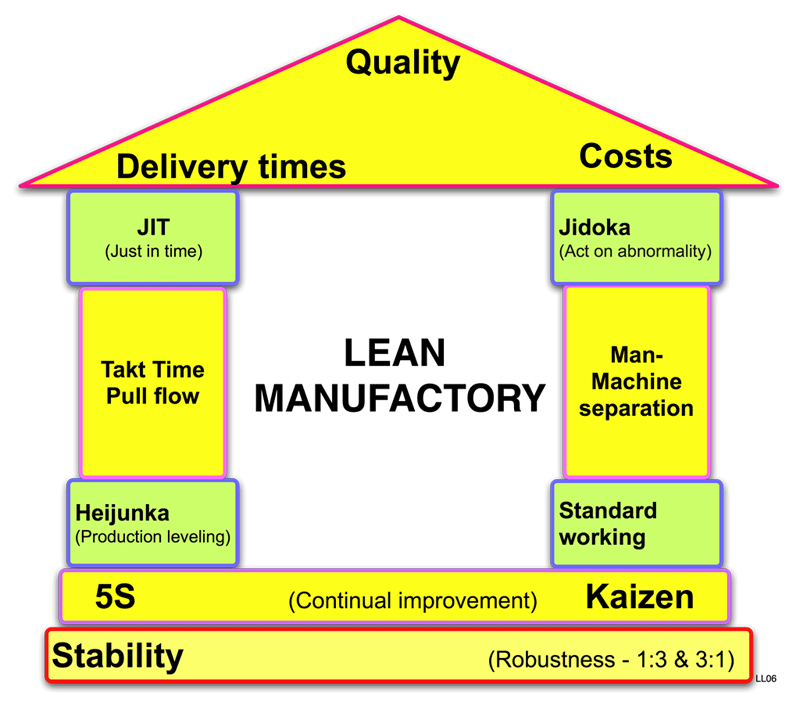Difference Between Agile and Lean
The corporate world is growing bigger day by day and with rapidly changing corporate ecosystem, large organizations are looking to facelift their business and production processes. The command-and-control hierarchy is moving to a more dramatic metaphor in search of the best alternative. One such unconventional approach to increase productivity within corporate sectors is “Lean manufacturing”. It’s a systematic approach to production which involves never ending efforts to minimize wastes within a manufacturing system. It’s an assembly-line manufacturing methodology which follows a strict reasonable pattern of manufacturing products only when the orders arrive rather than manufacturing in advance and stocking inventory. Software development ecosystem has similarly redefined by the Agile methodology which seemingly follows a similar pattern for developing software, allowing organizations to be more productive.
What is Lean?
Lean is a systematic approach to running an organization through a system of techniques and activities. The concept of Lean derives from Lean Manufacturing, which is a systematic production practice that aims to eliminate waste within manufacturing processes to improve productivity, efficiency, and effectiveness. Lean is more like a cost reduction methodology which prioritizes customer satisfaction over everything. It focuses on eliminating non-essential services that unnecessarily consume resources without adding any value to the manufacturing process. The idea is to work only on the things that matter rather than wasting resources on useless meetings, tasks, and documentation. Lean also focuses on a structured system to encourage the teams to operate as a whole rather than compartmentalizing them in order to increase efficiency and improve productivity.
What is Agile?
Agile is wildly popular in the software development space that encourages frequent inspection and feedbacks, refined engineering practices, strong leadership, etc. It refers to a set of values and principles strictly outlined in the Agile Manifesto. The concept is based on Lean which follows an incremental approach to software development by building a collective collaboration between the teams and the end users. It’s an evolutionary step towards software development which made customer satisfaction the top priority over others. Agile methodology would allow teams to frequently deliver codes in small batches rather than in large batches to seek customer feedbacks at regular intervals throughout the development cycle. This provides better flexibility to implementing changing requirements anytime in the development process thereby minimizing the risk of complete failure. Agile is based on Lean principles with practitioners using vocabulary from Lean manufacturing rather than from Agile.
Difference between Agile and Lean
Methodology of Agile and Lean
While Agile development derives most of its principles from Lean Manufacturing to fit software development, and vice-versa, they still differ a bit on how they work. Agile is a software development methodology that takes an iterative approach to meet customers’ needs by not committing to the final product until demands are known beforehand. Lean focuses more on customer satisfaction by identifying and eliminating “muda” – the Japanese term for waste or any activity that consumes unnecessary resources without adding any value.
Definition of Agile and Lean
Agile refers to a set of principles and values mentioned in the Agile Manifesto. It’s a heavyweight methodology which focuses on finding better ways of developing software through customer collaboration, individuals and interactions, meetings and feedbacks, comprehensive documentation, and iterative delivery. Agile development is based on Lean methodology, which on the other hand emphasizes on eliminating inefficient ways of working.
Approach in Agile and Lean
Agile follows a systematic iterative approach to project management which involves breaking a project into small modules called sprints. It determines a event-driven approach for a specific project related situation through responsive changes, collaboration, and continual learning. It promotes continuous iteration of development and testing throughout the development cycle. Lean approach focuses on introducing small incremental changes within the manufacturing process to increase efficiency.
Principle of Agile and Lean
The Agile Manifesto is all about individuals and interactions. Agile believes in constant interactions between teams and end users in order to achieve maximum efficiency with fewer complexities. Agile values customer collaboration more than contract negotiation. Lean, on the other hand, is all about waste rather than identifying new ideas for customer’s competitive advantage. It follows a systematic plan rather than responding to changes.
Goal of Agile and Lean
Agile is an umbrella term for several iterative methodologies for software development including Scrum, XP (Extreme Programming), FDD (Feature-Driven Development), Crystal, and more. The goal is to create something that complies with the end user requirements. Lean is an umbrella term for any systematic approach based on Lean Manufacturing and Toyota Production System, which include Lean Development, Lean Manufacturing, Lean Approach, etc. The goal is to eliminate any process that does not add value in some way.
Agile vs. Lean: Comparison Chart
Summary of Agile and Lean
Large organizations and businesses need a facelift to meet up with the rapidly changing corporate ecosystem which requires a more sophisticated system in place to overcome the ever-changing customer requirements. Lean development is one way to speed up the development process by working on things that matter and eliminating anything that consume unnecessary resources that aren’t adding any value. Agile is an unconventional approach to software development based on the principles of Lean development which emphasizes on customer satisfaction and collaboration between teams and end users. With organizations facing new challenges every day, identifying the right approach is important. This article focuses on the essential nature of Agile and Lean on various aspects.
- Difference Between Caucus and Primary - June 18, 2024
- Difference Between PPO and POS - May 30, 2024
- Difference Between RFID and NFC - May 28, 2024
Search DifferenceBetween.net :
Leave a Response
References :
[0]Wang, John X. Lean Manufacturing: Business Bottom-Line Based. Boca Raton: CRC Press, 2010. Print
[1]Wilson, Lonnie. How To Implement Lean Manufacturing. New York City: McGraw-Hill Education, 2009. Print
[2]Shore, James and Shane Warden. The Art of Agile Development. Sebastopol: O’Reilly Media, 2008. Print
[3]Image credit: https://commons.wikimedia.org/wiki/File:Lean_manufactory_house.png#/media/File:Lean_manufactory_house.png
[4]Image credit: https://upload.wikimedia.org/wikipedia/commons/thumb/5/50/Agile_Project_Management_by_Planbox.png/640px-Agile_Project_Management_by_Planbox.png



